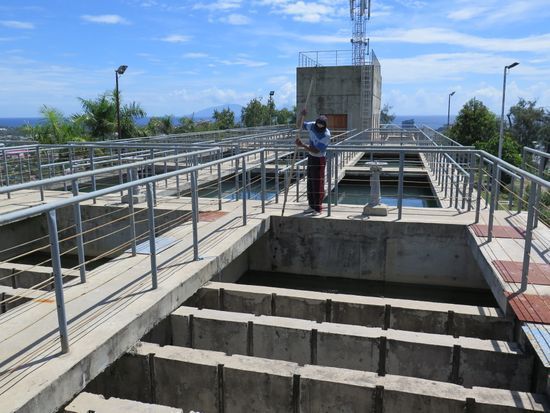Water safety planning for urban water supply systems: an introduction
Water safety planning is a comprehensive risk assessment and risk management approach that encompasses all steps in a drinking-water supply chain, from catchment to consumer. Water safety planning is recommended by World Health Organization (WHO) to ensure drinking-water safety and can help water suppliers achieve drinking-water quality targets. This course, Water safety planning for urban water supply systems – an introduction, outlines the principles and steps of the water safety planning approach and presents the success factors that underpin effective and sustainable implementation. It also highlights how water safety planning can strengthen resilience to climate threats. This course has been developed by the WHO Regional Office for South-East Asia.

Starts
Jun 08, 2025
Language
EnglishCertification
IWACourse Type
OnlineMember fee: $0.00
Standard fee: $0.00
Course Description
Water safety planning is a comprehensive risk assessment and risk management approach that encompasses all steps in a drinking-water supply chain, from catchment to consumer. Water safety planning is recommended by World Health Organization (WHO) to ensure drinking-water safety and can help water suppliers achieve drinking-water quality targets.
This course, Water safety planning for urban water supply systems – an introduction, outlines the principles and steps of the water safety planning approach and presents the success factors that underpin effective and sustainable implementation. It also highlights how water safety planning can strengthen resilience to climate threats.
This course has been developed by the WHO Regional Office for South-East Asia.
Overview: Water safety planning is a proactive risk assessment and risk management approach that encompasses all stages in a water supply from catchment to consumer. It is recommended by WHO as the most effective means of consistently ensuring the safety of drinking-water supply. The overall objective of the course is to contribute to the widespread effective implementation of water safety planning. This course introduces the principles and practices of water safety planning in urban water supplies.
Although the principles in this course can be broadly applied to all types of drinking-water supplies, the content is primarily intended for piped water supplies that are professionally managed (by a water supplier or equivalent management entity). A simplified water safety planning process more suitable for community-managed water supplies is presented in Water safety planning for small community water supplies: step-by-step risk management guidance for drinking-water supplies in small communities (WHO, 2012).
Course Audience
- Government actors with responsibility for drinking-water quality and safety (e.g. drinking-water quality surveillance authorities and ministries with responsibility for health and water supply), and those who support them. The course will help them integrate and support water safety planning practice, policies, regulations.
- Service providers, and those who support them. The course will help them initiate successful and effective water safety planning.
Learning Objectives
The basic principles and steps of water safety planning in urban water supplies
- Some common advantages of practising water safety planning
- Basic water safety planning terminology in urban water supplies
- Successful practices that lead to effective and sustainable water safety planning in urban water supplies
- Appropriate WHO resources and tools to help develop and implement a robust water safety plan in urban water supplies
Content and Schedule
Module 1: Water safety planning principles and benefits: In this module, you will gain an overview of the principles and benefits of water safety planning. You will also understand why water safety planning is practised. By the end of this module, you will: define water safety planning; outline the overall methodology of water safety planning; explain why water safety planning is carried out; and list common benefits of practising water safety planning.
Module 2: Rapid overview of water safety planning steps: In this module you will explore the key phases and components of water safety planning. You will also examine how water safety planning is a continuous improvement process and learn some crucial water safety planning terminology. By the end of this module, you will: list water safety planning key phases; explain how water safety planning is a continuous improvement process; list the components water safety planning; and identify important water safety planning terminology.
Module 3: Success factors for the sustainability of water safety planning: In this module you will explore several supportive enabling factors necessary for successful water safety planning. There is no single model approach for a water supplier to develop and implement water safety planning. However, practical application of water safety planning globally has identified several practices that underpin successful water safety planning. You will be introduced to these practices. By the end of this module, you will: describe key supportive enabling factors necessary for successful water safety planning; and recognize successful water safety planning practices.
Module 4: Water safety planning resources: In this module you will discover how to access key water safety planning resources. By the end of this module, you will: identify and locate various resources available for effective water safety planning implementation.